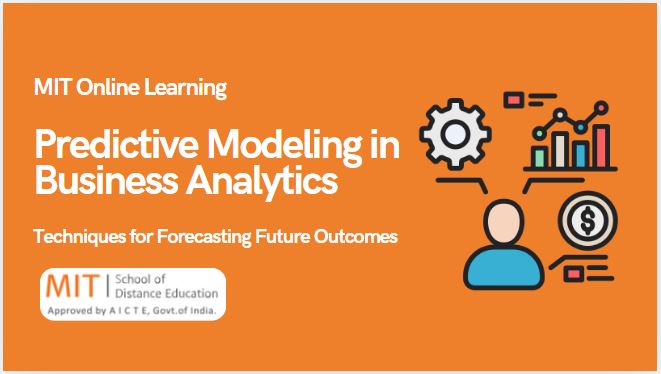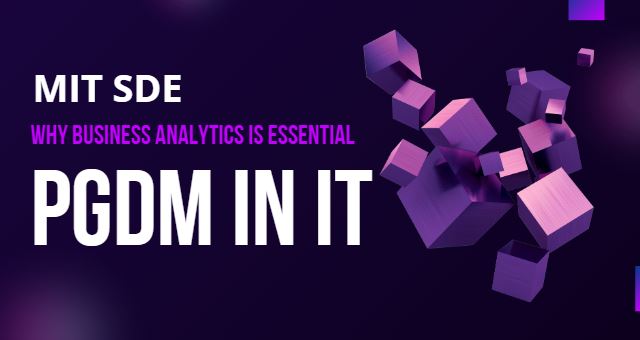
In an age where data is considered the new oil, businesses are leveraging advanced analytics to stay competitive. One of the most transformative tools in the field of business analytics is predictive modeling. This powerful approach allows organizations to forecast future events, customer behaviors, and market trends using historical data and statistical algorithms. From marketing and sales to finance and operations, predictive modeling is reshaping decision-making across every business function.
In this comprehensive blog, we’ll dive deep into predictive modeling in business analytics. We’ll explore what it is, how it works, the most popular techniques, real-world applications, benefits, and how you can start implementing predictive modeling in your own organization.
What is Predictive Modeling?
Predictive modeling is a process that uses data mining, statistical algorithms, and machine learning techniques to identify the likelihood of future outcomes based on historical data. These models analyze patterns in past and present data to make informed predictions about what might happen next.
Unlike descriptive analytics, which explains what has already happened, or diagnostic analytics, which delves into why something happened, predictive analytics looks ahead. It’s particularly valuable for:
- Forecasting sales trends
- Anticipating customer churn
- Predicting equipment failure
- Managing credit risk
- Personalizing marketing strategies
By using predictive modeling, companies can move from reactive to proactive decision-making.
 Predictive Modeling: (techniques for forecasting future outcomes)
Predictive Modeling: (techniques for forecasting future outcomes)
How Predictive Modeling Works
The predictive modeling process typically follows these steps:
- Data Collection: Gather relevant historical data from various sources such as CRM systems, ERP systems, social media, or sensors.
- Data Cleaning and Preparation: Remove inconsistencies, handle missing values, and transform data into a usable format.
- Feature Selection and Engineering: Identify key variables (features) that will influence the outcome and possibly create new ones.
- Model Selection: Choose the appropriate algorithm or combination of algorithms based on the problem type and data characteristics.
- Model Training and Testing: Train the model using a portion of the data and test it on unseen data to evaluate its accuracy.
- Model Deployment: Integrate the predictive model into business systems to generate real-time predictions.
- Monitoring and Maintenance: Continuously monitor the model’s performance and update it as necessary.
Popular Predictive Modeling Techniques in Business Analytics
There are various statistical and machine learning methods used in predictive modeling. Here are some of the most widely used:
1. Linear Regression
Used to predict continuous variables. For example, predicting monthly sales based on advertising spend and seasonality.
2. Logistic Regression
Used for binary classification problems like whether a customer will churn (yes/no). It provides probabilities for each outcome.
3. Decision Trees
These models split data into branches based on feature values and are highly interpretable. Ideal for customer segmentation and credit risk analysis.
4. Random Forest
An ensemble method that builds multiple decision trees and merges their results to improve accuracy. Useful for handling complex and noisy datasets.
5. Time Series Analysis
Techniques like ARIMA and SARIMA are used for forecasting data that is time-dependent. Common in inventory and financial forecasting.
6. Neural Networks
Mimic human brain functioning to detect patterns in large datasets. Excellent for image recognition, natural language processing, and complex financial predictions.
7. Support Vector Machines (SVM)
Effective for high-dimensional classification tasks. Often used in fraud detection and image classification.
8. K-Nearest Neighbors (KNN)
A non-parametric method used for classification and regression. It’s commonly used in recommendation engines and customer profiling.
Real-World Applications of Predictive Modeling
Retail
- Sales Forecasting: Predict future product demand based on seasonal trends and customer behavior.
- Customer Segmentation: Target marketing efforts based on customer preferences and purchase history.
Banking and Finance
- Credit Scoring: Assess the likelihood that a borrower will default.
- Fraud Detection: Identify suspicious activity in real-time using anomaly detection techniques.
Healthcare
- Disease Prediction: Predict the likelihood of diseases like diabetes or heart conditions based on patient data.
- Resource Allocation: Forecast patient volume to optimize staff and equipment usage.
Marketing
- Churn Prediction: Identify customers likely to leave and implement retention strategies.
- Campaign Optimization: Predict which messages will convert specific customer segments.
Manufacturing
- Predictive Maintenance: Anticipate equipment failures before they happen.
- Inventory Optimization: Forecast demand to reduce overstocking or stockouts.
Human Resources
- Attrition Modeling: Predict employee turnover to improve retention strategies.
- Talent Acquisition: Identify high-performing candidates based on past recruitment data.
Benefits of Predictive Modeling in Business
Predictive modeling brings a range of benefits to organizations that are ready to embrace data-driven decision-making:
- Improved Forecast Accuracy: Make more accurate predictions about revenue, costs, and market demand.
- Increased Efficiency: Allocate resources more effectively across departments.
- Competitive Advantage: Stay ahead of market trends and customer expectations.
- Cost Savings: Reduce waste and avoid costly errors by acting early.
- Enhanced Customer Experience: Deliver personalized experiences that improve satisfaction and loyalty.
Tools for Predictive Modeling
To implement predictive modeling in business analytics, professionals use a combination of programming languages, platforms, and visualization tools:
- Programming Languages: Python, R, SQL
- Machine Learning Libraries: Scikit-learn, TensorFlow, XGBoost
- Data Visualization: Tableau, Power BI
- Big Data Platforms: Apache Spark, Hadoop
- CRM & ERP Systems: Salesforce, SAP, Oracle Analytics
Getting Started: Learning Predictive Modeling
If you’re a business professional or aspiring data scientist, learning predictive modeling can open up lucrative career paths. Here’s how you can start:
- Take Online Courses: Enroll in a business analyst course online or online business analytics program from platforms like MIT School of Ditance Education, Coursera, edX, or Udemy.
- Hands-On Projects: Work on real-world datasets to understand concepts better.
- Get Certified: Earn a certification in business analytics or a post graduate certificate in business analytics such as Google Data Analytics, IBM Data Science, or SAS Predictive Modeler.
- Use Real Tools: Practice using Python, R, Tableau, or Power BI for data manipulation and model building.
Whether you’re looking for the best course for business analyst roles or aiming to upskill in predictive analytics, there are plenty of flexible and affordable options to choose from.
The Future of Predictive Modeling
As businesses continue to adopt AI and machine learning, predictive modeling will evolve with more sophisticated algorithms and real-time capabilities. The integration of real-time analytics, IoT data, and automated machine learning (AutoML) will make predictions faster and more accessible to non-technical users.
In the near future, we can expect predictive modeling to become even more deeply embedded in everyday business tools, empowering decision-makers at all levels.
Final Thoughts
Predictive modeling is more than just a trend—it’s a necessity for businesses looking to thrive in a fast-changing environment. By leveraging the power of data and analytics, organizations can forecast challenges, seize opportunities, and create more value for stakeholders.
Whether you’re managing marketing campaigns, assessing credit risk, or forecasting demand, predictive modeling helps you make smarter, data-informed decisions that drive real impact.
Start small, choose the right tools, and gradually build your team’s capabilities. With the right strategy, predictive modeling can become your business’s most powerful forecasting engine.



